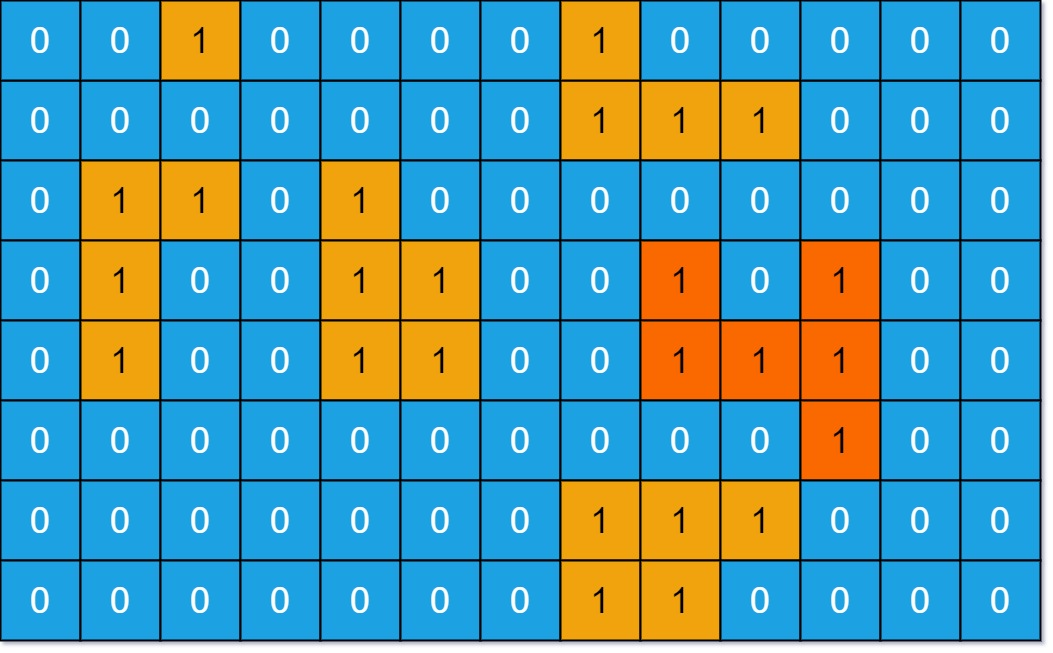2021-06-01 Daily-Challenge
Today I have done Not Boring Movies with mysql, Next Greater Element II and leetcode's June LeetCoding Challenge with cpp.
Not Boring Movies
Description
SQL Schema
Create table If Not Exists cinema (id int, movie varchar(255), description varchar(255), rating float(2, 1))
Truncate table cinema
insert into cinema (id, movie, description, rating) values ('1', 'War', 'great 3D', '8.9')
insert into cinema (id, movie, description, rating) values ('2', 'Science', 'fiction', '8.5')
insert into cinema (id, movie, description, rating) values ('3', 'irish', 'boring', '6.2')
insert into cinema (id, movie, description, rating) values ('4', 'Ice song', 'Fantacy', '8.6')
insert into cinema (id, movie, description, rating) values ('5', 'House card', 'Interesting', '9.1')X city opened a new cinema, many people would like to go to this cinema. The cinema also gives out a poster indicating the movies’ ratings and descriptions.
Please write a SQL query to output movies with an odd numbered ID and a description that is not 'boring'. Order the result by rating.
For example, table cinema:
+---------+-----------+--------------+-----------+
| id | movie | description | rating |
+---------+-----------+--------------+-----------+
| 1 | War | great 3D | 8.9 |
| 2 | Science | fiction | 8.5 |
| 3 | irish | boring | 6.2 |
| 4 | Ice song | Fantacy | 8.6 |
| 5 | House card| Interesting| 9.1 |
+---------+-----------+--------------+-----------+
For the example above, the output should be:
+---------+-----------+--------------+-----------+
| id | movie | description | rating |
+---------+-----------+--------------+-----------+
| 5 | House card| Interesting| 9.1 |
| 1 | War | great 3D | 8.9 |
+---------+-----------+--------------+-----------+
Solution
# Write your MySQL query statement below
SELECT * FROM cinema
WHERE (
id % 2 AND
description <> 'boring'
)
ORDER BY rating DESC
Next Greater Element II
Description
Given a circular integer array nums (i.e., the next element of nums[nums.length - 1] is nums[0]), return the next greater number for every element in nums.
The next greater number of a number x is the first greater number to its traversing-order next in the array, which means you could search circularly to find its next greater number. If it doesn't exist, return -1 for this number.
Example 1:
Input: nums = [1,2,1]
Output: [2,-1,2]
Explanation: The first 1's next greater number is 2;
The number 2 can't find next greater number.
The second 1's next greater number needs to search circularly, which is also 2.Example 2:
Input: nums = [1,2,3,4,3]
Output: [2,3,4,-1,4]
Constraints:
1 <= nums.length <= 104-109 <= nums[i] <= 109
Solution
class Solution {
public:
vector<int> nextGreaterElements(vector<int>& nums) {
int len = nums.size();
vector<int> answer(len);
vector<int> monoStack;
for(int i = len - 1; i >= 0; --i) {
int num = nums[i];
while(monoStack.size() && monoStack.back() <= num) monoStack.pop_back();
monoStack.push_back(num);
}
for(int i = len - 1; i >= 0; --i) {
int num = nums[i];
while(monoStack.size() && monoStack.back() <= num) monoStack.pop_back();
answer[i] = monoStack.size() ? monoStack.back() : -1;
monoStack.push_back(num);
}
return answer;
}
};
June LeetCoding Challenge 1
Description
Max Area of Island
You are given an m x n binary matrix grid. An island is a group of 1's (representing land) connected 4-directionally (horizontal or vertical.) You may assume all four edges of the grid are surrounded by water.
The area of an island is the number of cells with a value 1 in the island.
Return the maximum area of an island in grid. If there is no island, return 0.
Example 1:

Input: grid = [[0,0,1,0,0,0,0,1,0,0,0,0,0],[0,0,0,0,0,0,0,1,1,1,0,0,0],[0,1,1,0,1,0,0,0,0,0,0,0,0],[0,1,0,0,1,1,0,0,1,0,1,0,0],[0,1,0,0,1,1,0,0,1,1,1,0,0],[0,0,0,0,0,0,0,0,0,0,1,0,0],[0,0,0,0,0,0,0,1,1,1,0,0,0],[0,0,0,0,0,0,0,1,1,0,0,0,0]]
Output: 6
Explanation: The answer is not 11, because the island must be connected 4-directionally.
Example 2:
Input: grid = [[0,0,0,0,0,0,0,0]]
Output: 0
Constraints:
m == grid.lengthn == grid[i].length1 <= m, n <= 50grid[i][j]is either0or1.
Solution
const int moves[4][2] = {{0, 1}, {1, 0}, {0, -1}, {-1, 0}};
class Solution {
int current;
int rows;
int cols;
void dfs(vector<vector<int>>& grid, int row, int col) {
grid[row][col] = 0;
current += 1;
for(int i = 0; i < 4; ++i) {
int newRow = row + moves[i][0];
int newCol = col + moves[i][1];
if(newRow < 0 || newCol < 0 || newRow >= rows || newCol >= cols) continue;
if(grid[newRow][newCol]) {
dfs(grid, newRow, newCol);
}
}
}
public:
int maxAreaOfIsland(vector<vector<int>>& grid) {
rows = grid.size();
cols = grid.front().size();
int answer = 0;
for(int i = 0; i < rows; i++) {
for(int j = 0; j < cols; j++) {
if(grid[i][j]) {
current = 0;
dfs(grid, i, j);
answer = max(answer, current);
}
}
}
return answer;
}
};